Introduction
In recent years, hydroponic fodder systems have gained massive popularity among farmers, dairy owners, and livestock enthusiasts. With rising land costs, unpredictable weather, and the need for consistent, nutrient-rich feed, hydroponics offers a sustainable, efficient, and profitable solution. But what exactly is hydroponic fodder, and how can it transform your farm? Let’s explore.
What is Hydroponic Fodder?
Hydroponic fodder is fresh green feed grown without soil, using water and nutrient solutions in a controlled environment. Popular crops for hydroponic fodder include wheat, barley, maize, and oats. Seeds are germinated and grown in trays, typically for 7 days, producing a lush, nutrient-packed mat of green shoots and roots ready for livestock consumption.
How it Works
- Seed Selection – High-quality, untreated seeds are chosen for germination.
- Soaking & Germination – Seeds are soaked in water (sometimes treated with mild ozone or disinfectants) to activate germination.
- Tray Placement – Seeds are spread evenly in hydroponic trays inside a controlled grow room.
- Controlled Conditions – The system maintains ideal temperature, humidity, and light for optimal growth.
- Daily Watering – Trays are misted or watered at regular intervals using clean water.
- Harvest in 7 Days – The entire green mat (including roots) is fed to livestock.
Benefits for Farmers & Dairy Owners
1. Consistent Year-Round Production
Unlike traditional fodder, hydroponic systems aren’t affected seasonal changes or weather conditions.
2. High Nutritional Value
Hydroponic fodder contains up to 20% protein (depending on the crop), essential amino acids, vitamins, and minerals that boost livestock health and milk yield.
3. Space Saving
You can grow 600–800 kg of fresh fodder daily in just 100 sq. ft., making it ideal for small farms or urban setups.
4. Water Efficient
Uses up to 99 % less water than traditional farming — a big plus in drought-prone areas.
5. Faster Growth Cycle
Ready in just 7-9 days compared to 60–90 days for field-grown fodder.
6. Better Livestock Health
Improves digestion, boosts immunity, and reduces feed-related diseases in cattle, goats, sheep, and poultry.
Who Should Use Hydroponic Fodder Systems?
- Dairy farmers aiming for higher milk yield
- Goat, sheep, and poultry farms
- Horse breeders and animal shelters
- Urban farmers with limited space
Conclusion
Hydroponic fodder is not just a farming method — it’s a future-ready solution for sustainable livestock feeding. By investing in this technology, farmers can secure consistent feed, save resources, and enhance animal health — all while boosting profitability.

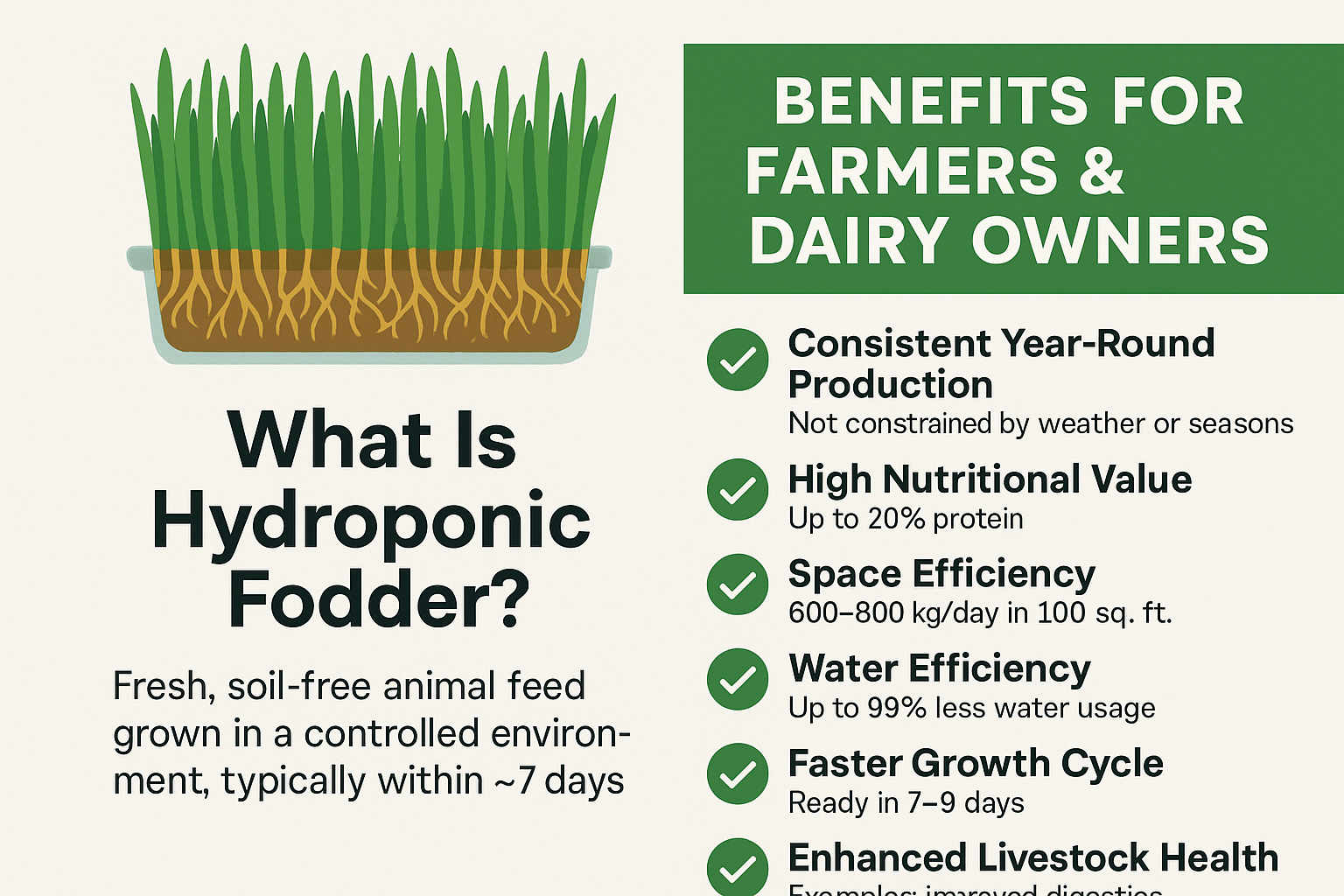
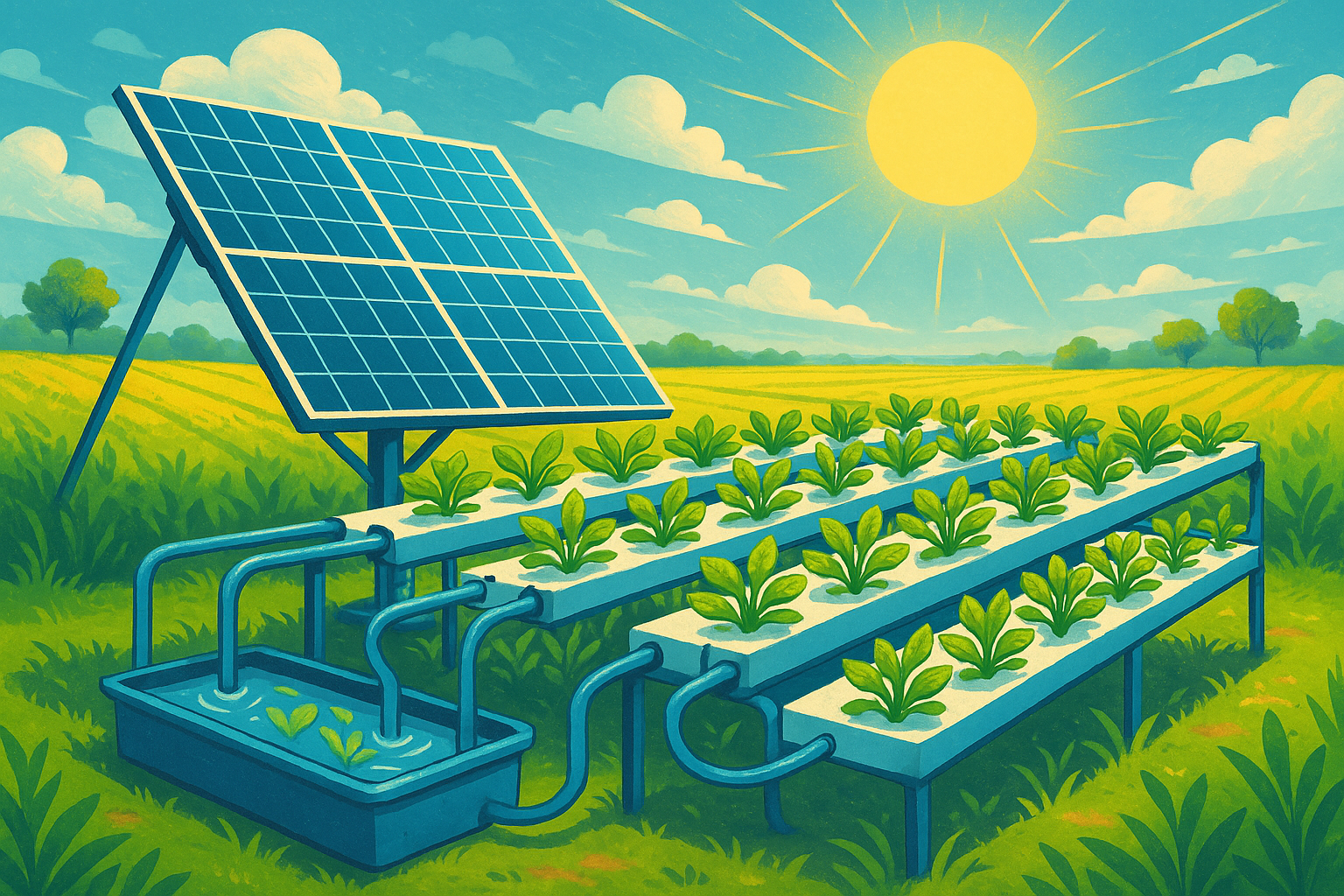
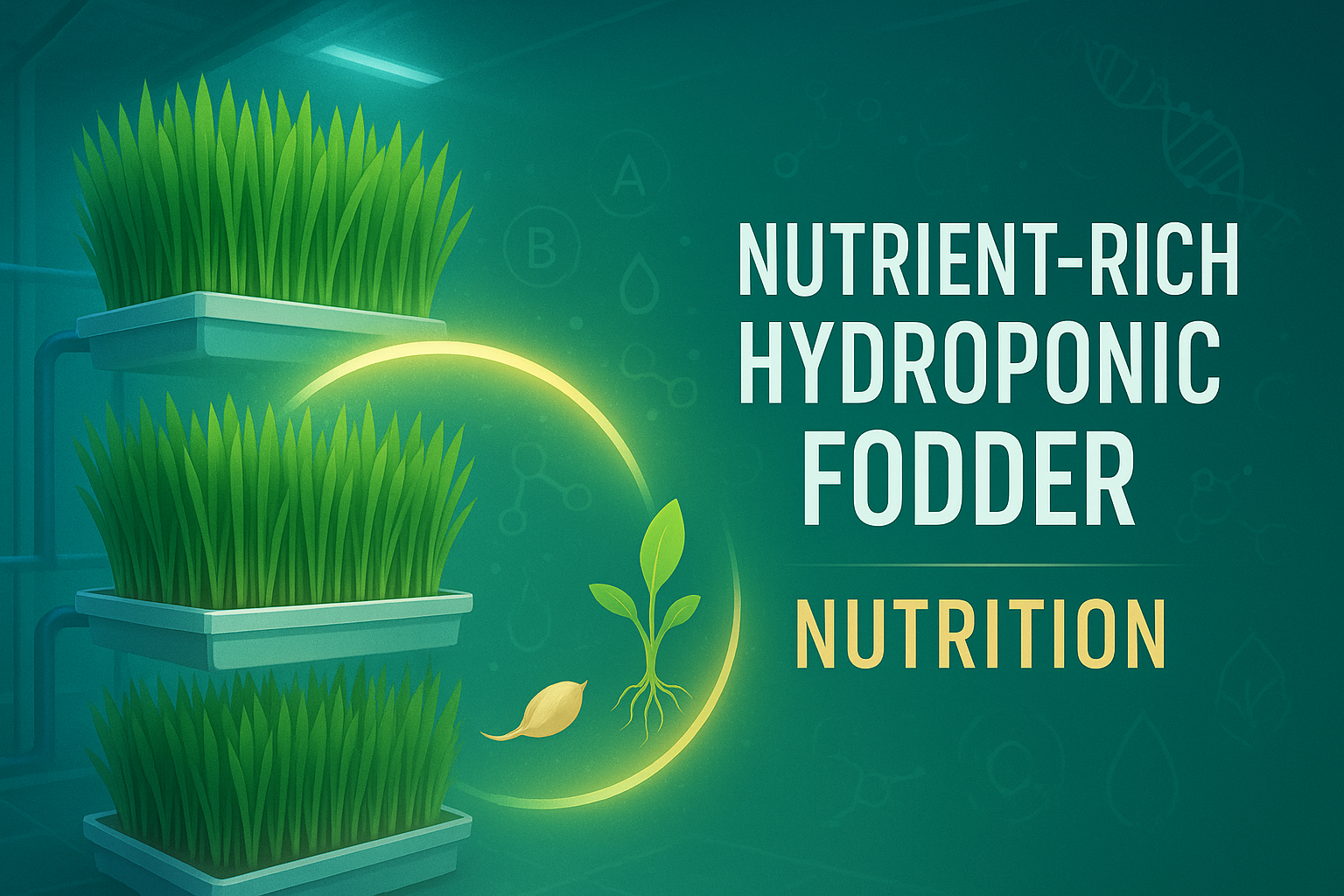
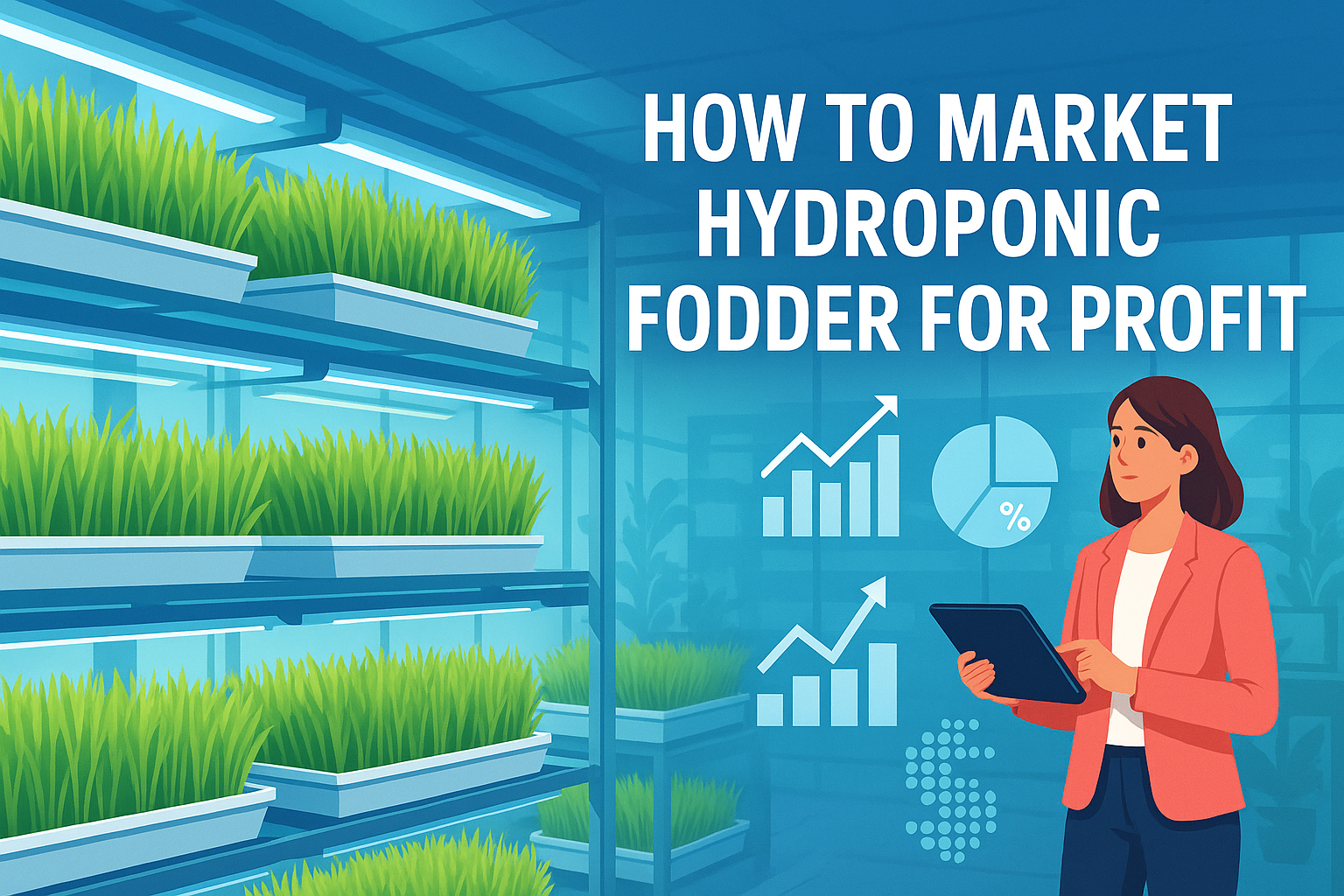
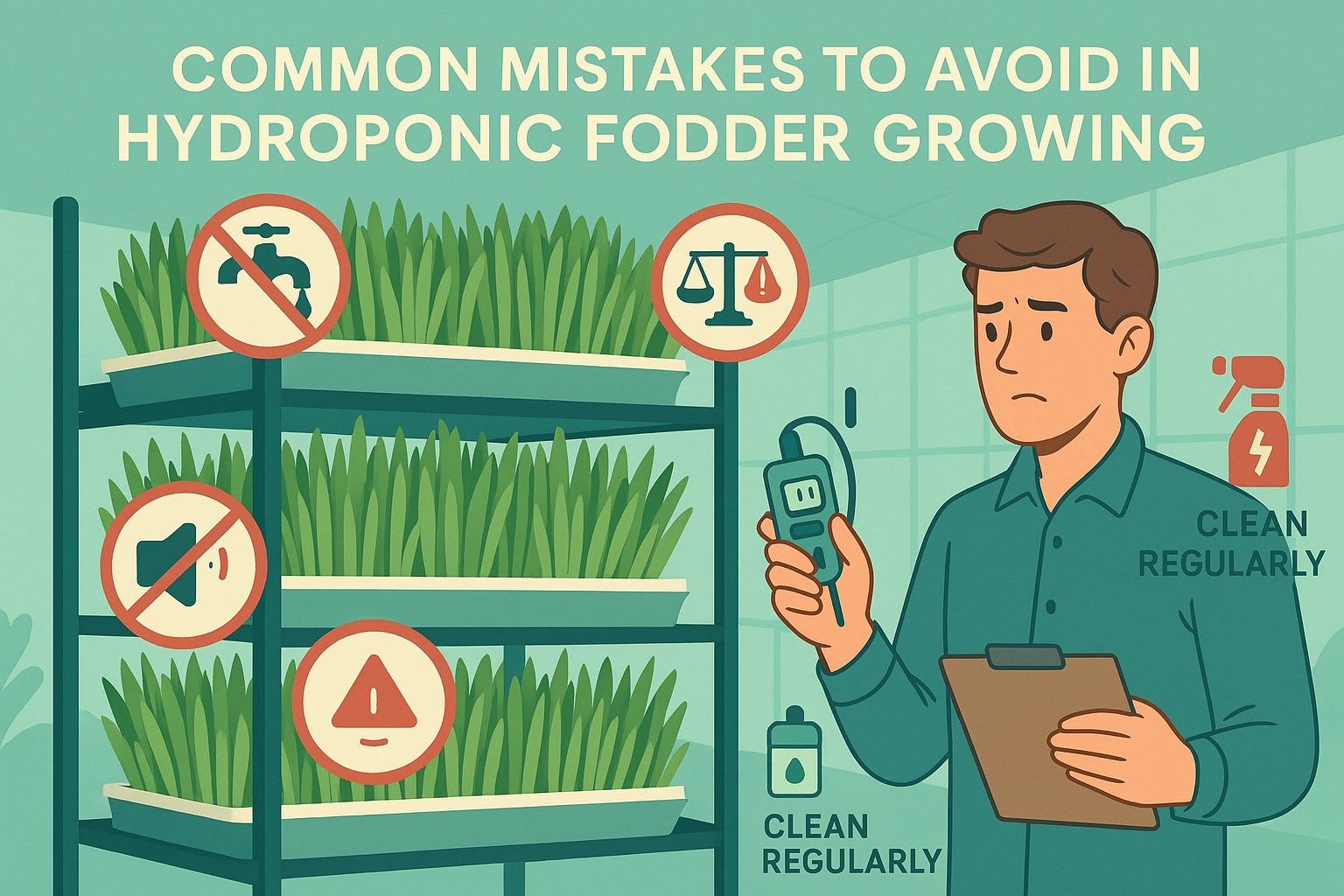





Leave a Reply